Why Should You Test Your Water?
Whether it’s for drinking, cooking, or daily bathing, water is an essential part of our lives.
There are many reasons to test your home’s water quality — understanding what’s actually in your water can help protect your family’s health and ensure your household appliances run safely. Below are some of the most common reasons homeowners perform water quality tests:
1. You use well water
If your household relies on a private well, you are responsible for monitoring its safety.
Unlike municipal water systems, private wells are not regulated, so regular testing is the only way to ensure your water is safe. Testing can reveal the presence of contaminants such as bacteria, nitrates, or heavy metals, and help you detect changes in water quality early.
2. You’re considering installing a water filter or softener
If you’re planning to purchase a filtration or softening system, testing your water is the first step.
The test results will help you understand which elements actually need treatment, allowing you to choose the most suitable system — whether it’s designed to remove chlorine, heavy metals, or reduce water hardness.
3. You’ve noticed unusual color or odor in your water
If your water appears cloudy, smells off, has a metallic taste, or you’ve noticed limescale buildup on your faucets or showerhead, these are signs of potential water quality issues.
Even slight changes in color or smell can indicate elevated levels of iron, chlorine, or bacteria.
If you notice your skin feeling dry or your hair becoming tangled after a shower — or your showerhead clogs easily — these are often caused by hard water (high levels of calcium and magnesium).
In this case, consider using a filtered shower head to reduce mineral buildup and improve your bathing experience.
4. You suspect your plumbing contains lead
Even if you receive a Consumer Confidence Report (CCR) from your local utility, it only reflects water quality before it enters your home — not what comes out of your tap.
Homes built before the 1986 Safe Drinking Water Act may still have lead pipes or fittings that can leach lead into the water. A water test can help identify these hidden risks.
5. You simply want peace of mind
Sometimes, testing your water isn’t about a visible problem — it’s about reassurance.
Routine water testing allows you to monitor your tap water quality over time, detect changes early, and feel more confident about your household water.
When Should You Test Your Water?
Water quality can change over time due to environmental factors, plumbing issues, or system updates. Knowing when to test helps you act before problems arise.
Here are common scenarios when water testing is strongly recommended:
1. After flooding in your area
Flooding can introduce surface pollutants, pesticides, bacteria, and chemicals into groundwater, contaminating wells or municipal systems. Test your water as soon as possible after a flood to ensure it hasn’t been compromised.
2. When there’s a pregnancy or newborn in your household
Pregnant women and infants are more vulnerable to contaminants like nitrates, lead, and bacteria.
Testing your water ensures it’s safe for drinking, bathing, and formula preparation.
3. After changes to your well system
Any modification — such as replacing or repairing a pump, deepening or cleaning a well, or sealing upgrades — can impact water quality. Testing ensures no new contaminants have entered during maintenance.
4. When plumbing or filtration systems show unusual wear
If you notice corrosion, leaks, or scaling in pipes and fixtures, it may signal changes in pH or mineral content.
Testing can help confirm if water chemistry is the cause.
5. Whenever you have doubts about your water source
Even without a specific event, any noticeable change in taste, color, or smell is reason enough to test your household water.
What Should You Know Before Testing?
Before starting, it helps to understand the possible contaminants in your water.Different water sources, environments, and plumbing systems can affect what you need to test for.Household water testing typically focuses on the following categories:
Microbial Contaminants
These include bacteria, viruses, and parasites such as E. coli and coliform bacteria, usually introduced through human or animal waste contamination.
If found, the water may be unsafe for drinking or cooking.
Chemical Contaminants
Common examples include heavy metals (lead, arsenic, mercury, copper, iron, manganese), nitrates, fluoride, and pesticide residues.
Heavy metals can leach from old plumbing or result from industrial pollution, while nitrates often come from fertilizers or animal waste — particularly dangerous for infants.
Physical Contaminants
These are impurities affecting the appearance, smell, or taste of water, such as sediment, rust, or suspended particles.
While not always a direct health threat, they can make water appear cloudy, smell unpleasant, or cause scaling and appliance damage.
Organic Compounds
Volatile organic compounds (VOCs) and trihalomethanes (THMs) may come from cleaning agents, industrial solvents, or as by-products of water disinfection.
Long-term exposure can pose potential health risks.
Understanding these contaminant types helps you choose the right home test kits or lab analysis. For example, if you live in an older home, prioritize testing for lead; if you use well water, focus on bacteria, nitrates, and iron/manganese levels.
Remember, testing is only the first step.If your results show high chlorine, rust, or mineral buildup, these substances can dry out skin and damage hair. Installing a filtered shower head, helps reduce impurities at every water outlet, improving your overall water quality and bathing comfort.
How to Get Your Local Water Quality Report?
If you’re on municipal water, you can easily review your area’s official water report — known as the Consumer Confidence Report (CCR) — published annually by local authorities.
This document lists your water source, key test results, detected contaminants, and whether they meet safety standards.
Here’s how to access it:
1. Contact your local government or water department
Every city’s water utility is required to perform regular testing and release annual results. You can call or email the water department to request the latest report.
2. Visit your city or county website
Most municipalities post annual reports online. Look under “Public Works” or “Utilities” sections to download the latest version.
3. Use the national drinking water database
The U.S. Environmental Protection Agency (EPA) provides online resources like Drinking Water Watch, compiling data from state-level utilities. Enter your ZIP code to see your local results.
4. Contact your community office or village council
In rural areas, local offices often maintain water reports or can direct you to where you can obtain them.
5. Reach out to your water supplier
If your water comes from a private utility, contact them directly. Customer service representatives can provide a recent report or guide you to their online database.
How to Test Well Water?
For households using well water, regular testing is essential — wells are more susceptible to environmental and system-related contamination. Depending on your purpose and budget, choose from the following methods:
1. Quick Test Strips
Steps:
- Collect room-temperature water in a clean glass.
- Dip the strip for about 5 seconds, gently swirl, and remove.
- Shake off excess water and wait for color changes.
- Compare the strip to the color chart to check pH, hardness, or chlorine.
Pros: inexpensive, simple, and fast.
Cons: limited indicators, lower precision, can’t detect bacteria or heavy metals.
2. Digital Testing Equipment
Includes pH meters, conductivity meters, and TDS (Total Dissolved Solids) meters.
Operation Method:
- Immerse the instrument probe in water and read the value directly.
- Ensure accurate readings by calibrating and maintaining the equipment.
Pros:
- Higher precision than test strips with instant readings.
- Measures multiple parameters including pH, total dissolved solids, and conductivity.
Cons:
- Higher cost requiring regular calibration and maintenance.
- Still unable to detect bacteria or complex contaminants.
3. Home Test Kits (Lab or DIY)
These kits include strips, bottles, and manuals. Some allow in-home testing, while others involve mailing samples to a lab.
Be cautious — not all over-the-counter kits are reliable.The EPA recommends using certified labs for accurate results (EPA Lab Certification).
Steps:
- Dentify what you want to test — bacteria, lead, pesticides, nitrates/nitrites, chlorine, hardness, pH, etc.
- Collect samples per instructions (run tap for 30–120 seconds, then fill sample bottle).
- Dip test strips or send samples to the lab.
- Read or await your results; if unsafe levels appear, retest to confirm before contacting local authorities.
Pros: detects a wide range of contaminants, provides accurate data.
Cons: costlier and slower (results take days).
4. Professional Laboratory Testing
The most accurate and comprehensive method.
Steps:
- Contact a certified lab for sampling instructions and bottles.
- Collect and submit water samples promptly.
- Receive a full report detailing contaminants, limits, and recommendations.
Pros: official, highly accurate, covers all critical indicators.
Cons: most expensive, slower turnaround.
Recommended Indicators to Test
- Nitrates: particularly harmful to infants.
- Coliform bacteria: test at least twice a year.
- pH level: extreme values may corrode plumbing.
- TDS: affects taste and hardness.
- Heavy metals (lead, iron, manganese): crucial for older homes or industrial areas.
5. Visual and Sensory Observation
While not a replacement for chemical tests, your senses can help detect issues early.
Look
- If your water looks brown, orange, or red, it probably contains rust from corroded pipes.
- If you see black particles, that could mean your pipes are degrading or rubber seals are breaking down.
- If the water looks cloudy or leaves white deposits, it’s likely due to high levels of calcium or magnesium — a common sign of hard water.
Smell
- If your water smells like bleach, it’s likely just chlorine added for disinfection — usually harmless.
- If it smells like rotten eggs, that often means sulfur bacteria are present — you should clean your pipes or test the water immediately.
- A musty or earthy smell may suggest organic contamination, especially if you’re using well water.
Taste
- If your water tastes metallic, it could be a sign of pipe corrosion or low pH levels.
- A salty taste might indicate high chloride or sulfate levels.
- If it tastes strongly of chlorine, there may be too much disinfectant in your local supply.
Summary and Recommendations
If you only want a basic overview of your tap water — such as chlorine, pH, or hardness — quick test strips or portable meters are convenient and affordable.
If you use well water, spring water, or have higher health standards (for babies, pregnant women, or sensitive skin), choose comprehensive test kits or professional lab services.
Regular testing and timely maintenance are key to safe water. Retest whenever you notice changes in color, taste, or odor.
The ultimate goal of water testing is to ensure your household’s health and comfort.If your results indicate hard water or high chlorine levels, these factors can dry out skin, dull hair, and cause irritation.In such cases, consider upgrading your shower system with a high-performance filtered shower head, which helps remove chlorine and heavy metals, soften hard water, and protect your family’s health — starting with every shower.
Frequently Asked Questions (FAQ)
1. How often should I test my water quality?
If you use municipal tap water, testing once or twice a year is usually enough. But if you rely on well water or notice changes in color, smell, or taste, test it every 3–6 months or whenever something seems off.
2. Do I need professional testing, or are home kits enough?
For basic checks (like hardness, chlorine, or pH), home test kits or digital meters are convenient and affordable.
If you suspect heavy metals, bacteria, or pesticides, it’s best to use a certified lab test for more accurate results.
3. What’s the safest way to shower if my water isn’t clean?
Even if your drinking water is filtered, unfiltered shower water can still contain chlorine, rust, or other contaminants that irritate your skin and hair. Installing a filtered shower head is an easy way to protect yourself.
4. How do I know if I have hard water?
Signs include dry skin, dull hair, soap scum, and white spots on faucets or tiles. You can confirm it with a water hardness test kit or a TDS meter.

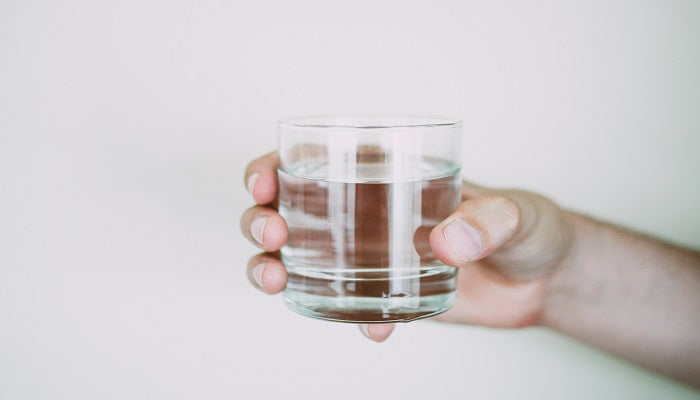
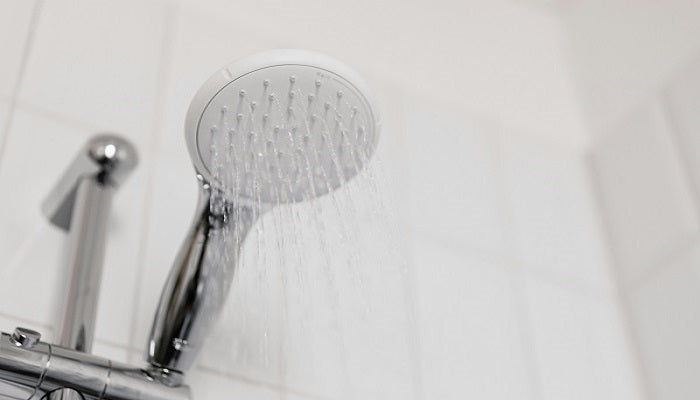
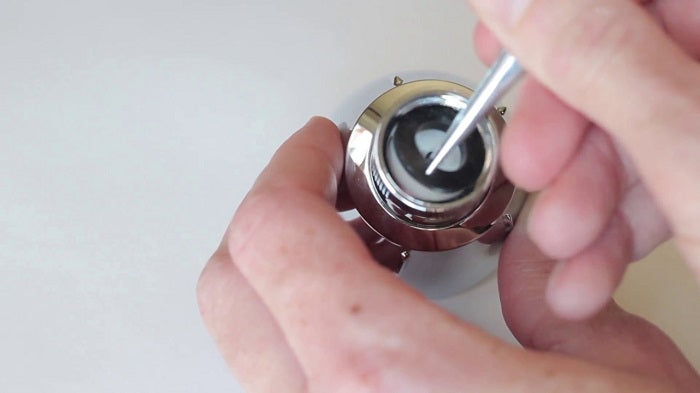
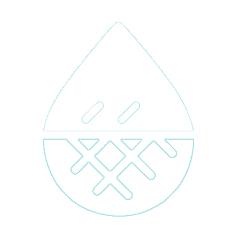


Leave a comment
This site is protected by hCaptcha and the hCaptcha Privacy Policy and Terms of Service apply.